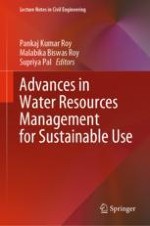2021 | OriginalPaper | Chapter
26. Study of Gumti Wetland in Connection with Its Socio-Economic Status: A Step Towards Sustainable Management Practices
Authors : Mihir Pal, Malabika Biswas Roy, Pankaj Kumar Roy
Published in: Advances in Water Resources Management for Sustainable Use
Publisher: Springer Singapore
Activate our intelligent search to find suitable subject content or patents.
Select sections of text to find matching patents with Artificial Intelligence. powered by
Select sections of text to find additional relevant content using AI-assisted search. powered by
